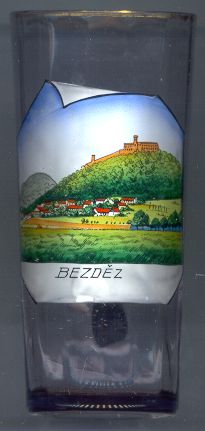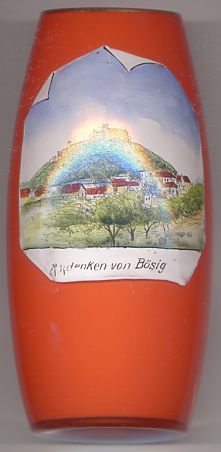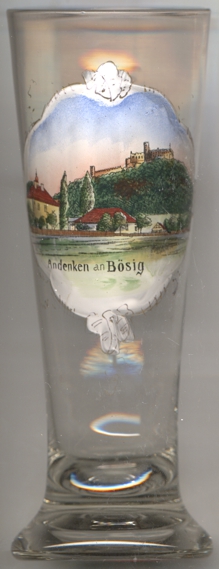

|
| ČESKÁ REPUBLIKA | CZECH REPUBLIC |
| Liberecký kraj | Liberec region |
| Okres: Česká Lípa |


 Bezděz castle on the mountain (605 m) of the same name (German: Bösig) was built in 1260–1278
by the Bohemian King Otakar II Přemysl. The construction was stopped in 1278 after the death of Otakar.
His son, Wenceslaus II, who at the time was only seven years old, then was imprisoned for several years at Bezděz castle
by his regent Margrave Otto IV of Brandenburg. Until 1420 the castle remained a property of the Bohemian sovereigns.
During the Thirty Years' War (1618–1648) Baroque fortifications were added to the Gothic castle by Abrecht of Waldstein
(Wallenstein, Waldštejn). Nevertheless, the castle was partly burnt. Augustinian monks were then called in from
Bělá (Weißwasser) in 1625 but the monks returned to Bělá only five years later.
In 1662 the castle finally became a Benedictine monastery when it became inhabited by Benedictine monks.
When a copy of the Madonna of Montserrat was brought to Bezděz, the monastery also became a pilgrimage site.
However, during the wars between Austria and Prussia in the 18th century, the monastery was occupied and the treasures were stolen.
The monastery was finally dissolved in 1785 and the castle began to fall into dereliction.
The remaining parts were restored since the mid-19th century and today are a popular tourist attraction as a splendid example of early
Gothic architecture.
Bezděz castle on the mountain (605 m) of the same name (German: Bösig) was built in 1260–1278
by the Bohemian King Otakar II Přemysl. The construction was stopped in 1278 after the death of Otakar.
His son, Wenceslaus II, who at the time was only seven years old, then was imprisoned for several years at Bezděz castle
by his regent Margrave Otto IV of Brandenburg. Until 1420 the castle remained a property of the Bohemian sovereigns.
During the Thirty Years' War (1618–1648) Baroque fortifications were added to the Gothic castle by Abrecht of Waldstein
(Wallenstein, Waldštejn). Nevertheless, the castle was partly burnt. Augustinian monks were then called in from
Bělá (Weißwasser) in 1625 but the monks returned to Bělá only five years later.
In 1662 the castle finally became a Benedictine monastery when it became inhabited by Benedictine monks.
When a copy of the Madonna of Montserrat was brought to Bezděz, the monastery also became a pilgrimage site.
However, during the wars between Austria and Prussia in the 18th century, the monastery was occupied and the treasures were stolen.
The monastery was finally dissolved in 1785 and the castle began to fall into dereliction.
The remaining parts were restored since the mid-19th century and today are a popular tourist attraction as a splendid example of early
Gothic architecture.

The village Bezděz below the castle is even older. A royal court "in Bozdiz" and its church, dedicated to St. Giles,
were already mentioned in a document of 1185.
Bezděz had a great impression on many artists:
Karel Hynek Mácha (1810–1836) visited the castle six times. "Maj" (May), his biggest work, is situated to the scenery of Doksy. The lake near Doksy today is named for Mácha (Máchovo jezero).
The painter Alois Bubák (1824–1870) devoted some of his pictures to Bezděz.
Bedřich Smetana (1824–1884) used the legend about a treasure in Bezděz in the opera "Tajemství" (The Secret).
![[scale]](lineal.jpg)